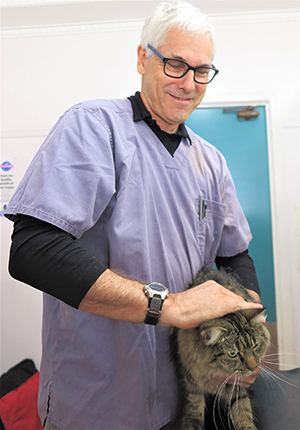As someone who works all day with animals, as a Veterinarian, I am often reminded of W.C.Fields’ famous quote : “never work with children or animals”. It helps to trot this one out when my furry patient is not sticking to the script or has an entirely different agenda.
Last week I was reminded of the enormous value of animals, in particular the canine species, working with us humans, when I met Bruce the labradoodle who had been trained to work as an Assistance dog for a client who suffered from PTSD/Anxiety.
Bruce seemed like your normal happy, tail-wagging young dog during his checkup and immunisation. The only clue that he was different was the red harness his owner held, emblazoned with the words ASSISTANCE DOG.
Bruce’s owner explained that it is only when this harness goes on that, like flipping a switch, Bruce “knows he’s working”, and his demeanour and behaviour change. Bruce will constantly monitor his owner’s body language, attitude, facial expressions and voice characteristics, probably detecting changes using his hyper acute sense of smell, and responding by staying very close, nudging gently or even placing his paw gently on his owner.
We all know how Labrador Guide dogs work wonderfully with the vision impaired, with their leather harness that works the same way: “harness on”- I’m working, “harness-off” my downtime.) More recently, dogs have been trained to assist us in many more ways. For instance, detector dogs are trained to work in conservation projects to detect a particular plant or animal species. Imagine trying to find a single Quoll scat in a couple of hectares of thick bush - yet a dog can smell it from 100 metres away and take you straight to it!
There are Medical Alert dogs for Type 1 diabetes who can detect by smell and alert in both hyper and hypo glycemic states, Seizure alert and response dogs, assistance dogs for those with Autism and also assistance dogs for persons with mobility impairment including cerebral palsy, para- and quadriplegia.
The Medical Alert dogs are multi-skilled. Not only can they detect, say, an imminent seizure episode in a child up to 20 minutes beforehand and alert an adult guardian, they can also be trained to retrieve medication, roll a person into the recovery position, move furniture or objects out of the way, rouse an unconscious person, retrieve a phone and use a medical alert device to summon help.
Mobility assistance dogs are trained to open and close doors, drawers and fridges, act as a brace to assist in balance and maneuvering, turn lights on and off, press the button at the traffic lights, carry stuff, and alert someone if they detect a child in danger.
One might suggest that that little red harness is less of a work uniform and more of a super-hero suit. Much of what these dogs do relies on sensory abilities outside the range of human visual, auditory and certainly olfactory capacity, so I thinks it’s fair to say they have “Super-powers”.
And of course there is the 24/7 loyal and unconditional companionship and friendship.
Have you hear of the TT Cat? It’s a new breed that can detect and calm a toddler having a tantrum… just kidding. Cats, much like toddlers, are untrainable. W.C Fields was partly right!
















